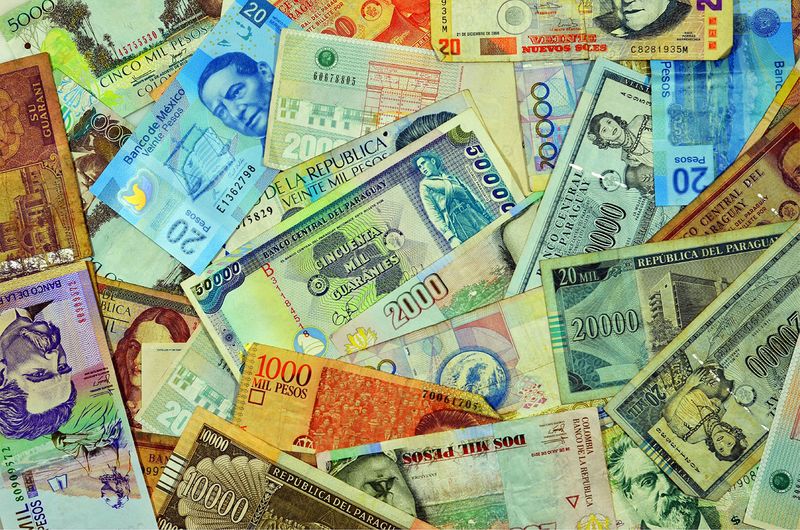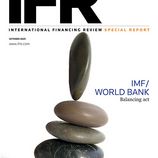Lack of preparation and weak economic foundations threaten to undermine Latin America's recuperation from the ravages of the coronavirus pandemic
The headlines were bleak from the start. ‘Latin American economy set for biggest crash in 75 years’, wrote Reuters. ‘Fears mount of a fresh Latin American debt crisis,’ wrote the FT.
As Latin America became the global epicentre of the coronavirus pandemic, concerns that the region was stumbling towards another ‘lost decade’ were quick to surface. The IMF in June revised the region’s economic growth forecast for this year to -9.4% from -5.2% in April.
Meantime, the pandemic has claimed the lives of more than 300,000 people in the region and infected at least eight million others. Brazil’s official death toll is second only to the US.
“The region went into the pandemic probably the least prepared for the health crisis and on the weakest economic footing compared to the other regions in emerging markets,” said Rodica Glavan, an emerging markets fund manager at Insight Investment.
But the immediate impact has not been as bad as first feared, in part because of the policy response from governments and central banks across the region. Interest rates have been cut to record lows in most countries, while many governments have put in place sizeable stimulus packages to try to prop up their economies.
Against that backdrop, some economists are revisiting their growth forecasts for the region. Sebastian Brown, chief Latin America economist at Deutsche Bank, says Brazil’s downturn is now likely to be less severe than the bank initially expected, given the amount of fiscal support the government has provided. The bank now predicts a -5.2% contraction this year compared to its prediction of -6.2% in May.
Meantime in Mexico, which has largely kept its hands in its pockets, Brown expects its economy to contract slightly more - about -10.1% compared to a -7.9% forecast in May.
But those stimulus packages will come at a cost - and the price tag is still unknown.
“Brazil is running a much bigger deficit than just about anyone else in Latin America and you’re certainly seeing the largest increase in debt, so the focus will be on how that plays out in terms of debt sustainability going forward,” said Rafael De La Fuente, Latin America economist at UBS.
For now, domestic rates are low - Brazil’s central bank cut its benchmark rate to just 2% in August - and it has relatively little foreign currency debt. But if something did cause rates to jump higher, the country could quickly find itself in difficulties.
Yet doing nothing also potentially has consequences, says De La Fuente.
“The risk for a country like Mexico is that they may not be able to grow out of this lower level of indebtedness if they’ve done too much structural damage,” he said. “If the unemployment we’re seeing turns out to be long-term and structural and we see a wave of bankruptcies, maybe the price of austerity was too high.”
In some cases, stimulus measures were not enough to cushion the blow. Peru, for instance, put in place one of the biggest support packages in the region, but its limited healthcare capacity meant it had to impose a strict lockdown, crippling the economy. Peru’s GDP is expected to experience a double-digit contraction of around -14% this year.
“It’s a very mixed picture across the region, it’s not just about the stimulus, it’s a combination of the stimulus and the actual health crisis, and therefore the lockdowns that countries have implemented,” said Gustavo Rangel, chief economist for Latin America at ING.
Yet despite the economic contractions and the inevitable rise in debt to pay for the stimulus measures, financial markets have been relatively forgiving. While spreads did widen at the start of the crisis, most have since compressed, with some - notably Chile, Uruguay and Paraguay - even trading at levels last seen in January, according to Moody’s.
Part of the reason the economic stress has not translated into a financial crisis is because debt conditions remain relatively benign. To start with, Latin American economies have been able to get their balance of payments under control, with some countries in the region now even running current account surpluses, reducing their borrowing needs. And in many cases, countries have also developed deeper domestic markets, reducing their reliance on external debt.
“Because Latin American countries don’t have dollarised debt to such a large extent, FX weakness doesn’t translate into more debt,” said Rangel. “In the past there was a vicious cycle where any risk aversion in the market would trigger FX weakness, which would trigger higher debt, which would then trigger more FX weakness, and so on. That dynamic is no longer the case.”
MARKET ACCESS
Latin American countries - and even some corporates - have also been able to maintain market access throughout the crisis. Panama was able to issue a US$2.5bn 36-year bond with a 4.5% coupon at the end of March, while both Mexico and Peru were able to get large deals away in April, Moody’s data show. Mexico raised US$6bn across three issues, while Peru raised US$3bn across two.
Yet investors are wary about potential rating downgrades if countries persist with looser fiscal conditions and their budget deficits widen. Even in Mexico, which has remained committed to fiscal austerity, falling government revenues could cause debt repayment strains.
“The country where debt levels will probably increase the most is Brazil, but Brazil has already been downgraded to junk, so it would not be as big of a jump as for Colombia or Panama or Mexico who are at the lower end of the investment grade spectrum,” said Glavan. “Those are cuspy and markets have already started to question the debt sustainability of their investment-grade ratings. If they are downgraded to high-yield this will result in significantly higher financing costs.”
The focus for investors now, then, is what happens next.
“Obviously, we’ve had a massive heart attack growth-wise, so the one thing we’re looking at very closely is how quickly we can come out the other side and see a meaningful pick-up in economic activity,” said Tim Jagger, head of emerging market debt at Columbia Threadneedle Investments.
“Some countries have more fire power than others, but you have to tread carefully. The big challenge is we’re heading into midterm elections in pretty much every major economy in the region bar Brazil, and the risk is that the environment is ripe for populists to come along and get elected by promising things they can’t afford, so that could impact the exit trajectory from this situation.”
For Ernesto Revilla, chief Latin America economist at Citigroup, the countries that had stronger countercyclical measures, such as Peru and Chile, are likely to reach escape velocity the fastest.
“While having good countercyclical policies didn’t prevent countries from contracting, it will help with their recoveries - that’s where we are going to see the most differentiation,” said Revilla. “But we are forecasting a weak recovery generally in the region and it is not going to be enough to offset the downturn in 2020. The pandemic is just exacerbating some of the problems Latin America had before the pandemic, such as poverty, inequality and low growth, so the outlook is definitely challenging for the region.”
For Brown at Deutsche Bank, the rebound is unlikely to be clean and will largely hinge on the outlook for the global economy. The pandemic may also continue to weigh on any recovery in the region, he says.
“In Latin America the problem is still very real, the virus is still there and the trajectory of countries where things seemed to be contained like Colombia, Argentina and even Peru are worsening day to day,” he said. “While a return to lockdown is unpalatable, the public health infrastructure in many of these countries is weak and without lockdowns it may not be possible to avoid a mass casualty event. There may be no other option than to lock down again.”
For some investors, the amount of emergency support sloshing around means the fallout from the crisis has yet to really hit.
“The brunt of the damage hasn’t really been reflected in a lot of the data yet,” said Aaron Gifford, an emerging market credit analyst at T. Rowe Price. “When you start seeing some of these lending programmes roll off or companies can no longer defer payments on loans, then you would expect NPLs will shoot up quite a bit, but we don’t really know when that will be.”
That has made it challenging to pick between the winners and losers.
“Mexico is winning the ugly contest right now,” he said. “Clearly the trajectory was negative before Covid - there’s been five quarters of negative GDP growth now - but the magnitude of the deterioration is more modest compared to other countries in the region and they’re not generating a huge deficit like everyone else is, so Mexico could be a relative outperformer in the near term. Later on, we’ll have to see how the rebound develops.”
Therefore it remains to be seen whether Mexico’s dogged commitment to fiscal austerity will prove to be the right policy response to the pandemic, or whether racking up debt to support the economy, such as in Brazil, was the correct call. De La Fuente cautions against rushing to judgment.
“In the 2008 financial crisis there was a perception that Brazil had gotten its countercyclical fiscal policy right and their downturn was much more short-lived and much shallower than other countries,” he said.
“But that fiscal largesse turned into a problem when the government was unable or unwilling to take away the proverbial punchbowl. We won’t know which was the right path to take for some time - and both strategies could be wrong. Brazil could end up with a massive debt problem and Mexico could end up with lasting structural damage that could have been avoided.”
To see the digital version of this report, please click here
To purchase printed copies or a PDF of this report, please email gloria.balbastro@refinitiv.com




























